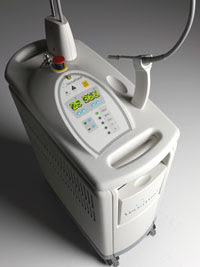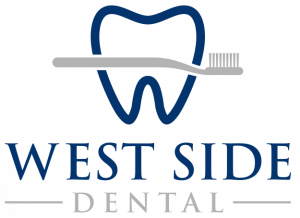Versawave: Dentistry with a Light Touch
Modern dentistry encompasses new technology!


Modern dentistry encompasses new technology light years ahead of traditional drill-and-fill methods that send so many scurrying to avoid their dentists’ offices. With the advent of laser dentistry, patients who have cavities no longer need to hear the noise and feel the vibration of mechanical high-speed drills. Two other types of dental lasers handle treatment of gum disease and cosmetic tooth whitening. There’s a new dental laser in town. This laser is called the Versawave. Here’s how it works — The new Versawave laser works by emitting a specialized beam of light that targets and destroys dental decay. Pretty cool, huh?
Here are just a few of the benefits of the Versawave
1. No need for needles, yet no pain. It’s a breeze. Drills are very powerful, and the vibration and large hole produced can cause discomfort, making some type of anesthesia almost necessary. With the Versawave laser, the light works to destroy and remove the decay with no uncomfortable tooth vibration and resulting discomfort. In fact, clinical studies have shown that 96% of all patients, both adults and children, required no anesthesia when the Versawave dental laser was used to remove decay.
2. No high-pitched whine or vibration from the grinding of the drill. All you hear is a soft popping similar to the sound of popcorn popping.
3. The laser sterilizes the tooth as it removes decay. Because of bacterial contamination, many of you have had to have old fillings replaced with either new fillings, or in many cases, with crowns — and sometimes even root canals! Since this new laser sterilizes the tooth as it removes decay, and since many dentists now use ‘bonded’ filling materials enriched with fluoride, it reduces the chances of recurrent decay under that new filling.
4. The laser activates microscopic droplets of water that removes tooth decay. Unlike other lasers, there is no heat generated that could damage the nerve – it’s the ‘safe’ water laser. The lack of nerve inflammation when the Versawave is used results in significantly less tooth sensitivity after new fillings.
5. Laser treatment of the tooth surface has been shown to result in 50-70% more resistance to tooth decay.
6. Vibration from dental drills routinely causes micro-cracks in enamel that can progress into teeth causing the need for crowns and root canal therapy. Reducing the potential for cracked teeth means fewer crowns and root canals.
7. The laser is more conservative in what it removes than a drill, and that means the tooth retains more strength and less chance of future problems.
8. The most common areas of tooth decay are the natural pits and fissures found on the biting surfaces of molars. We can seal these fissures but they are often so narrow that conventional methods of cleaning them are unable to fully remove the debris. In contrast, the laser can be set at a very low power setting, allowing total removal of all debris without loss of healthy enamel. The obvious result is a sealant that has an excellent chance of lasting and preventing tooth decay for an entire lifetime.
9. Historically, sealants have only been placed on children because by adulthood debris collecting in the fissures has become so firmly “packed” that sealants have been unsuccessful. The Versawave laser can remove this debris, thus affording adults the same sealant protection against the most common type of tooth decay as children.
10. The Versawave is especially good for kids because they no longer need to get shots or hear a loud drill. Without these things to worry about, kids won’t become afraid of the dentist, and won’t grow up to be adults afraid of the dentist.
11. With the use of the water laser, there is no numbness, and thus no chance of a child injuring himself by biting his lip or tongue.
12. With no need for needles, fillings can be done on the same visit with no need to bring you back. Also, without numbness, you can tell right away how the bite feels.
